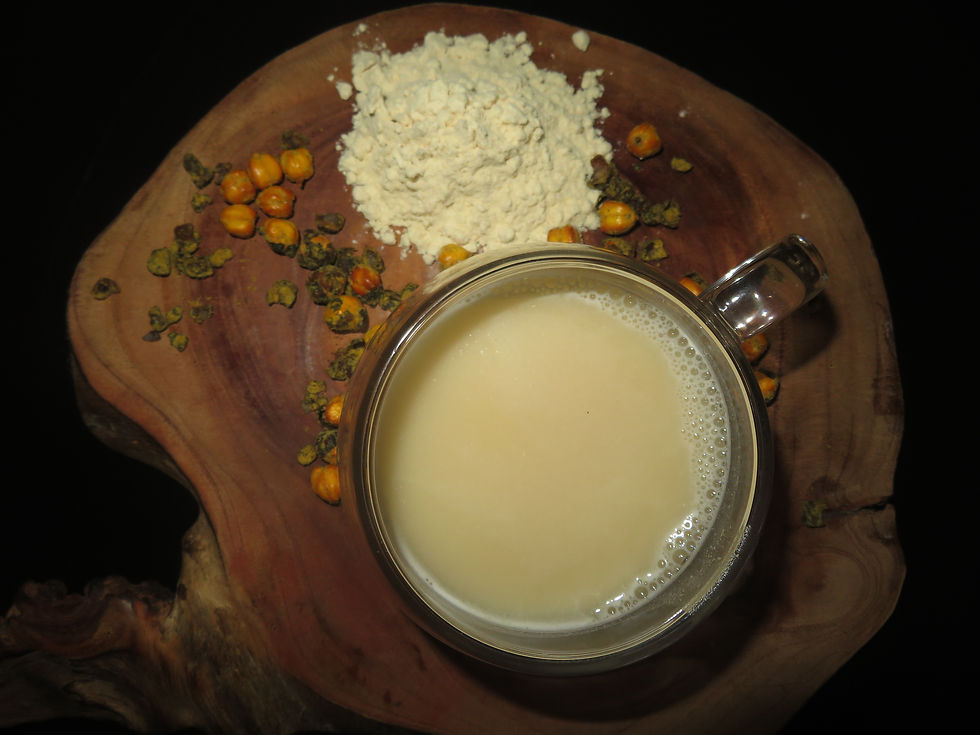Preserved in a jar
- mitu khaitan
- Jun 30
- 3 min read

Some foods are meant to sit quietly on the side of the plate, mirchi ka aachar is not one of them. Fiery, bold, and unapologetically assertive, Indian chili pickle is far more than just a condiment. Glossy with mustard oil, deeply spiced, and vibrant in both flavour and personality, it announces itself the moment it arrives on the plate. In my home, this pickle holds a particularly special place. My sister, in fact, enjoys mirchi ka aachar as though it were a sabzi, generously scooped with roti, stirred into rice, or occasionally eaten directly from the jar. For her, it’s not an accompaniment, it’s the highlight of the meal.
India’s history with pickling spans centuries. Long before refrigeration, Indian households preserved produce using a timeless combination of salt, spice, sunlight, and oil. Among the many ingredients that found their way into glass jars and ceramic pots, the chili, introduced to India by the Portuguese in the 16th century, quickly became a favorite. Over time, mirchi ka aachar evolved into a culinary tradition, especially in northern and western parts of India, where families perfected their own blends of spices and oil. The act of pickling was more than just preservation, it was seasonal ritual, a communal practice, and often, a matriarch’s art form passed down through generations.
The preparation of mirchi ka aachar is grounded in both culinary tradition and food science. Once cleaned and sun-dried, the chilies are slit and stuffed with a spice blend often comprising mustard seeds, fennel, fenugreek, turmeric, hing, and salt. These ingredients, when toasted and ground, release essential oils that enhance flavor and aid digestion. The chilies are then immersed in mustard oil, which not only contributes to their rich, pungent flavor but also acts as a natural preservative. Mustard oil contains compounds like allyl isothiocyanate, known for their antimicrobial properties, which help keep the pickle shelf-stable. Sun exposure during the pickling process further facilitates fermentation, creating an acidic environment that enhances both taste and longevity.
What makes this tradition particularly compelling is how it has gracefully integrated with modern innovation. Today, many pickle manufacturers use solar dehydrators, vacuum-sealing, and hygiene-controlled fermentation chambers to scale production without compromising quality. Advanced food technologies such as AI-based analysis are also being explored to optimize spice ratios, ensure consistency, and extend shelf life. Yet, for all its technological upgrades, no machine can replicate the instinct of a grandmother knowing exactly when the chilli has absorbed the oil “just right” or how long a jar should sit in the sun.
Mirchi ka aachar is not just a culinary product, it is a reflection of identity and regional expression. In Rajasthan, it’s often served with bajra roti and thick curd; in Andhra Pradesh, it takes on a redder hue, mixed with garlic and curry leaves. Each household adapts the spice levels, oil content, and texture to suit its own palate. And in my household, it’s my sister who has redefined its role entirely. What was once meant as a small spoonful on the side is, in her eyes, the star of the thali. Watching her eat it like sabzi used to make us laugh. Now we just pass her the jar to her out of habit.
Mirchi ka aachar is a story of resilience and flavour. It represents a deep-rooted knowledge of preservation, a celebration of seasonal abundance, and an art form that blends taste with technique. It’s the jar that brings intensity to simple meals and the element that ties together generations through memory, ritual, and shared enjoyment. Whether consumed in small quantities for a burst of spice or relished in generous helpings like a dish in its own right, this iconic pickle remains an enduring part of Indian culinary heritage.








Comments